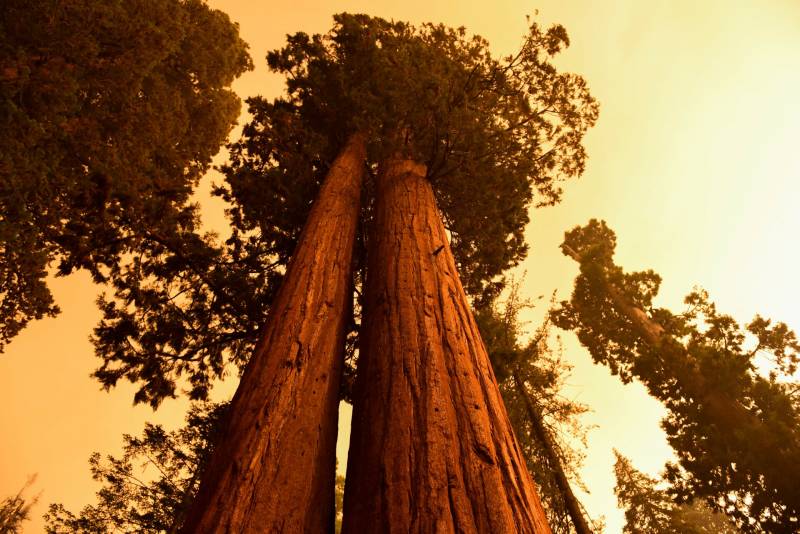The KNP Complex was only 11% contained after burning 134 square miles of forest. Cooler weather has helped slow the flames and the area could see some slight rain on Friday, forecasters said.
The fire’s impact on giant sequoia groves was mixed. Most saw low- to medium-intensity fire behavior that the sequoias have evolved to survive, Brigham said.
However, it appeared that two groves — including one with 5,000 trees — were seared by high-intensity fire that can send up 100-foot flames capable of burning the canopies of the towering trees.
That leaves the monarchs at risk of going up “like a horrible Roman candle,” Brigham said.
Two burned trees fell in Giant Forest, which is home to about 2,000 sequoias, including the General Sherman Tree, which is considered the world’s largest by volume. However, the most notable trees survived and Brigham said the grove appeared to be mostly intact.
Firefighters have taken extraordinary measures to protect the sequoias by wrapping fire-resistant material around the bases of some giants, raking and clearing vegetation around them, installing sprinklers and dousing some with water or fire retardant gel.
However, the full extent of the damage won’t be known for months, Brigham said. Firefighters are still occupied protecting trees, homes and lives or can’t safely reach steep, remote groves that lack roads or even trails, she said.
To the south, the Windy Fire had burned at least 74 sequoias, Garrett Dickman told the Los Angeles Times. The wildfire botanist has recorded damage as part of a sequoia task force preparing and assessing trees in the fire zone.
In one grove, Dickman counted 29 sequoias that were “just incinerated,” he told CNN.
“There were four of those that had burned so hot that they’d fallen over,” he said.
The 152-acre fire was 75% contained.
